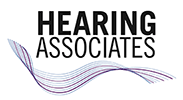
Keep your eyes on the road. While this may be sound advice, how about your other senses? As an example, think about how much work your ears are doing while driving. You’re using your ears to engage with other people in your vehicle, alert you to important information appearing on your dashboard, and help you monitor other vehicles.
So the way you drive can change if you’re experiencing hearing loss. That doesn’t automatically mean you will have to quit driving because you’ve become overly dangerous. With regards to safety, inexperience and distracted driving are far greater liabilities. That being said, those with decreased hearing need to take some specific safeguards to stay as safe as possible.
Hearing loss can impact your situational awareness but developing safe driving habits can help you remain a safe driver.
How hearing loss might be impacting your driving
Vision is the principal sense utilized when driving. Even total hearing loss probably won’t stop you from driving, but it very likely could change the way you drive. After all, you use your hearing a lot while you’re driving. Here are some typical examples:
- Audible alerts will sound when your vehicle is attempting to alert you to something, like an unbuckled seat belt or an open door.
- Other drivers will often honk their horns to alert you to their presence. If you fail to see the light turn to green, for instance, or you start to drift into the other lane, a horn can alert you before it becomes a problem.
- If there is any damage to your vehicle, your sense of hearing can alert you to it. For example, if you run over an obstruction in the road or a rock hits your windshield.
- Emergency vehicles can usually be heard before they can be seen.
- Your sense of hearing can help you have a better sense of other vehicles near you. For example, you will normally be able to hear a large truck coming toward you.
All of these audio cues can help build your overall situational awareness. You may start to miss more and more of these audio cues as your hearing loss progresses. But you can practice some positive measures to keep your driving as safe as possible.
Developing new safe driving habits
It’s no problem if you want to continue driving even after you have hearing loss! Stay safe out on the road with these tips:
- Minimize in-car noises: Hearing loss will make it hard for your ears to differentiate sounds. When the wind is howling and your passengers are talking, it may become easy for your ears to get overstimulated, which can cause you to become distracted and tired. So put up your window, turn down the music, and keep conversations to a minimum while driving.
- Put away your phone: Well, this is wise advice whether you suffer from hearing loss or not. Phones are among the leading causes of distraction on the road today. And that doubles when you try to use them with hearing loss. You will simply be safer when you put away your phone and it could save your life.
- Keep an eye on your dash lights.: usually, when you need to pay attention to your instrument panel, your vehicle will beep or make some other sound. So you’ll want to be sure to glance down (when it’s safe) and make sure your turn signals aren’t still on, or your check engine light isn’t on.
- Check your mirrors more often: Even with sirens blaring, you may not hear that ambulance coming up behind you. So be vigilant about checking your mirrors. And generally try to keep an elevated awareness for emergency vehicles.
How to keep your hearing aid ready for driving
Driving is one of those tasks that, if you are dealing with hearing loss, a hearing aid can really help. And when you’re driving, use these tips to make your hearing aids a real asset:
- Use your hearing aid each time you drive: If you don’t wear it, it won’t help! So make sure you’re wearing your hearing aids each time you get behind the wheel. By doing this, your brain will have an easier time acclimating to the incoming signals.
- Keep your hearing aids clean, updated, and charged: You don’t want your hearing aid batteries to quit right when you’re driving to the store. That can be distracting and perhaps even dangerous. So make certain everything is in good working order and the batteries are charged.
- Ask us for a “driving” setting: We can program a car setting into your hearing aid if you do a lot of driving. This setting will be adjusted for the inside space and configuration of your vehicle (where, usually, your conversation partner is beside and not in front of you), making your drive smoother and more enjoyable.
Hearing loss doesn’t mean driving is a problem, especially with hearing aids which make it easier and safer. Your drive will be enjoyable and your eyes will stay focused on the road if you establish safe driving habits.
